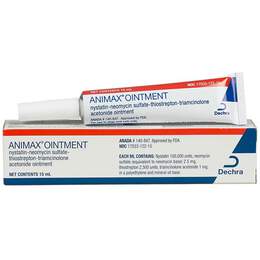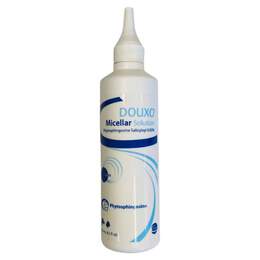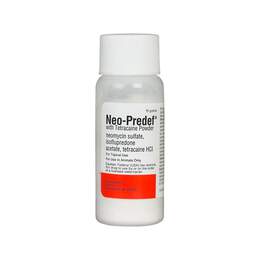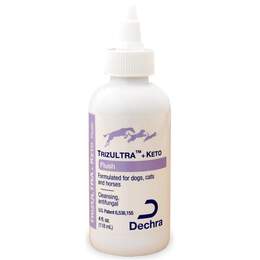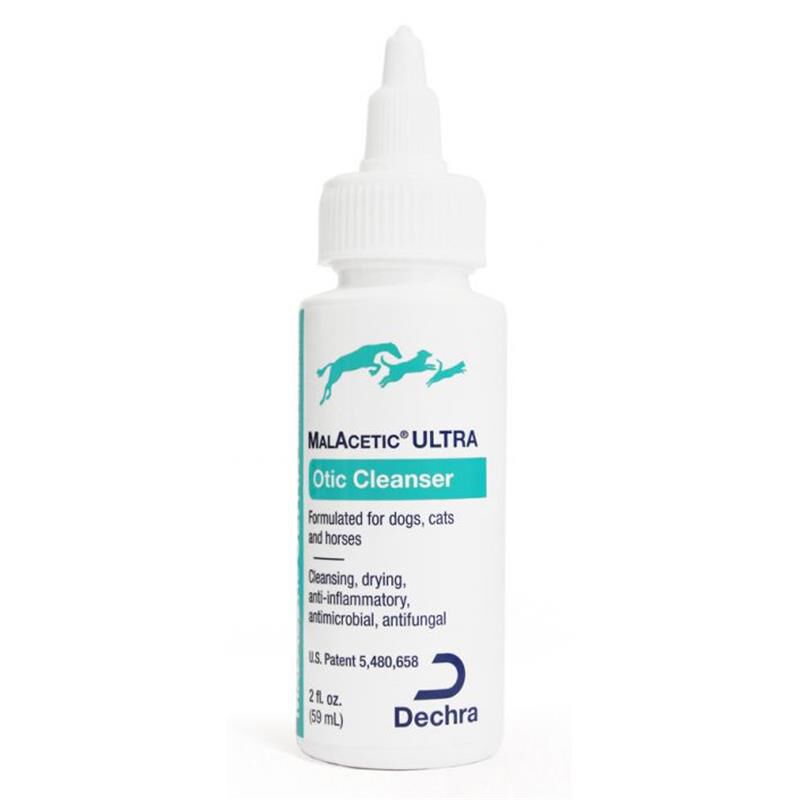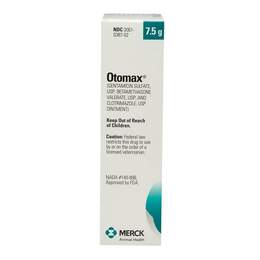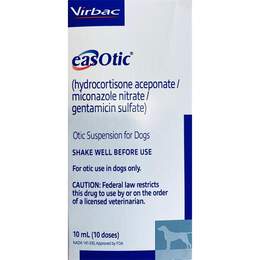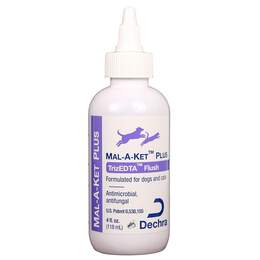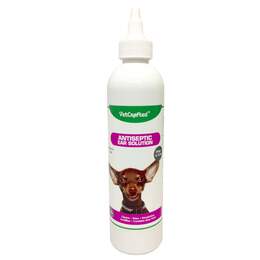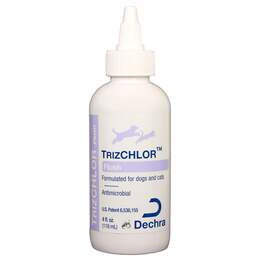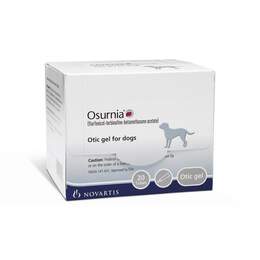Dog Ear Care
Dog ear problems are a common reason dog owners bring their pets to see the veterinarian. And often, their dogs have had many recurring ear infections. Often dog ear problems begin as minor, relatively harmless issues such as hairy ears, ear wax, or water in the ears. However, left untreated, these issues can quickly become serious ear infections.
Most ear issues in dogs begin in their external ear canal. A dog's outer ear canal is longer and vertically shaped, kind of like the capital letter L, which makes it easy for something like water to get into the ear canal and stay there. In addition, the ear canal is lined with skin that contains hair follicles and glands like the skin of their body. This makes their ears prone to the same skin conditions that affect their paws, back, head, and legs.
In order to catch ear issues before they become serious, it is important to know the signs and make ear care a part of your dog's healthcare routine.
Signs of Ear Problems in Dogs
If you think your dog has an ear infection, it is essential to take them to your veterinarian as soon as you can. Once diagnosed, your veterinarian will give you an ear solution for dogs that can quickly resolve the issue.
Scratching or Pawing at the Ear
If you see your dog scratching or pawing at their ear, they may have the beginnings of an ear infection. Their ear is starting to itch, or they may feel minor pain. If left alone, the scratching and pawing will get worse. However, your dog could be scratching their ear because it is itchy. If this is the case, the scratching will stop once the itch goes away. Monitor your dog's behavior for a few days, if it continues for more than a few days, it's probably an ear infection.
Head Tilt and Shaking
A head tilt is one of the most common signs of the early stages of an ear infection. This is often accompanied by head shaking. When the infection causes pressure to build up in your dog's ear, they often tilt their heads to one side or shake it to try and relieve the painful pressure.
Head tilt and head shaking can also be signs that your dog has neurological issues. If your dog has no other signs of an ear infection, pawing and scratching their ear, for example, take your dog to your veterinarian for a complete checkup.
Loss of Balance
Dogs rely on their ears for balance, just like we do. As an ear infection gets worse, it can affect a dog's balance, and they may walk with a lopsided gait. They may stumble frequently and have trouble going up and downstairs. This is a sign that an ear infection is getting worse. If you notice this symptom in your dog, take them to see a veterinarian as soon as you can.
Smelly Ears
A moderate to a severe ear infection can cause a dog to have unpleasantly smelly ears. Sometimes this odor comes from the outer ear, but more often, it originates from deep within their ear. And you may be able to smell it without sticking your nose into your dog's ear. This smell is caused by a buildup of bacteria inside your dog's ear. As the infection gets worse and bacteria continues to build up, the smell will also continue to get worse.
Swelling and Redness of the Ear
Swelling and redness in the ear are another sign that the infection is getting worse. You may be able to see it outside the dog's ear, or you may have to look closely inside it. No matter where you see it, this means your dog needs immediate treatment.
The swollen ear will probably be very tender and painful, so try not to touch it too much. You will probably need to clean it with an ear solution for dogs recommended by your veterinarian. Follow the instructions provided, but otherwise, leave the ear alone to keep from causing your dog additional pain.
Oozing from the Ear
A severe ear infection may cause the ear to ooze, in addition to the smell. The ooze is usually pus caused by the infection, and it generally looks white, brown, or green. This stage means that the infection has progressed and is serious. If not treated, your dog may suffer from hearing loss. With the right dog ear care, the infection can quickly clear up, and your dog's ears will return to health.
Common Ear Problems in Dogs
There are many different ear problems in dogs that, if left alone, can lead to ear infections. Once you know what they are, you can take the proper steps to prevent them or keep them from becoming worse.
Allergies
Allergies are a common ear problem that can lead to ear infections in dogs. This is because they tend to make the ears itchy and the subsequent scratching and pawing open the door for infection. Finding the cause of the allergy will help alleviate the issue.
Ear Mites
Ear mites are passed from pet to pet, so your dog may pick them up from another pet in the house, or more commonly, from a cat they may come into contact with. Head shaking, odor, and scratching are some of the symptoms. Check your dog's ears for mites regularly to ensure they don't become infected.
Hairy or Heavy Ears
Breeds with hairy or heavy ears often get ear infections. The amount of hair that grows in the ear canal keeps air circulation to a minimum, which fosters a damp environment in the ear that bacteria love. Dogs with heavy ears also have issues with airflow to the ears. For dogs with hairy ears, keep the hair around the ears clipped. Check the ears often to stop any infections before they become more significant problems.
Ticks, Plant Debris, Wax, and Foreign Objects
Dog's ears can pick up plant debris, foreign objects, and ticks, as well as become clogged with wax. Regularly check your dog's ears, especially after they have spent time outdoors. You can use a dog ear spray to clean them and use monthly flea and tick control medication to keep them from picking up ticks.
Ear Hematoma
An ear hematoma, or blood-filled pocket under the skin of your dog's ear, differs from the problems above in that it is caused by ear infections rather than causing them. Excessive head shaking, scratching and pawing, and trauma can also cause hematomas. You can lower your dog's chances of developing a hematoma by preventing the conditions above that lead to infection.
How to Relieve Ear Problems
Ear problems that cause ear infections in dogs can be handled by paying close attention to the state of your dog's ears. Check them regularly and clean them if needed with a topical ear solution for dogs.
For ear mites, you will need to see a veterinarian who will administer an anti-parasitic medication. If your dog has hairy ears, be sure to keep the hair clipped. It is a good idea to learn how to clean your dog's ears and, of course, if you think there is debris or something else in your dog's ears, call your veterinarian and follow their advice.





